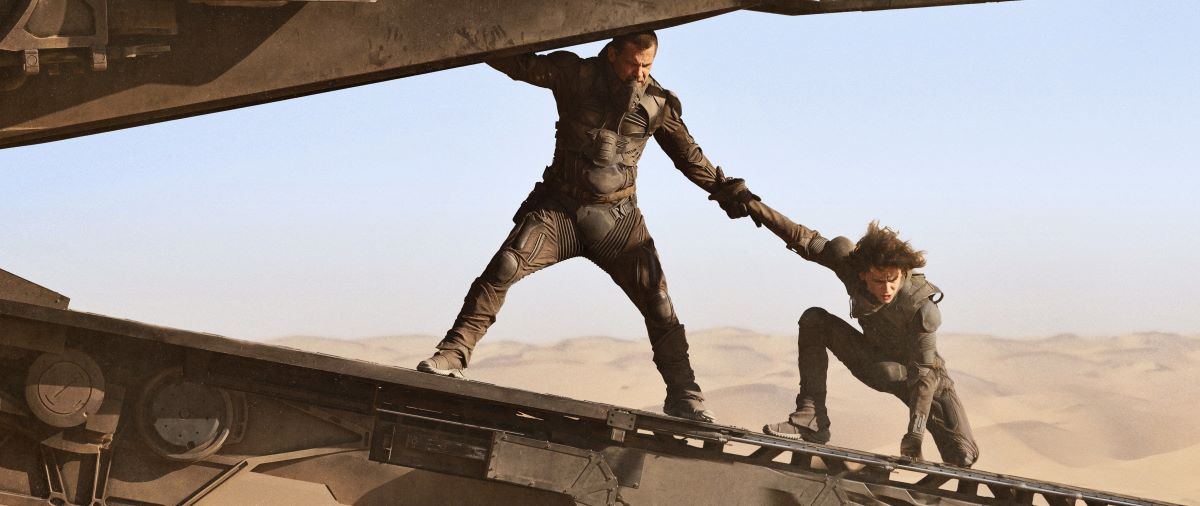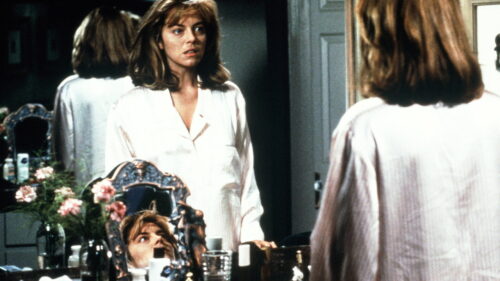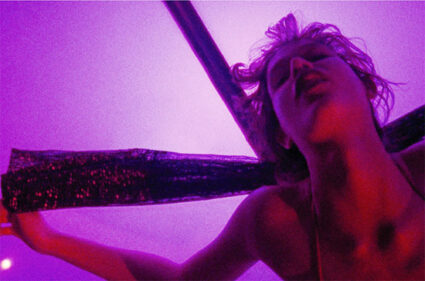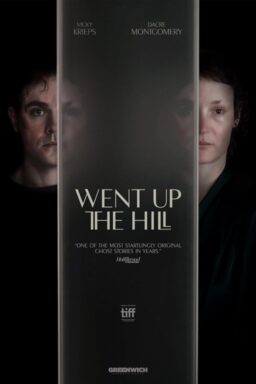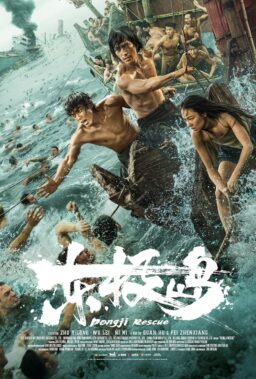“Dune” is a sandworm for would-be adapters. Many have summoned it, but until now, none have been able to ride it. Alejandro Jodorowsky tried and failed to adapt Frank Herbert’s 1965 bestseller in the early seventies. David Lynch made a perverse, hallucinatory interpretation forty years ago, filled with startling images and moments. But because he never really cared about commercial linear narrative (to his credit, in most projects) the baseline “…and then what happened?” pleasures of the book remained untapped or were rendered in a perfunctory manner. Lynch later later said that a better version was killed in a creative turf war between himself and his backers, but it seems increasingly clear that it was a bad match of material and interpreter from the start. (Paul’s assumption of the mantle of messiah happens so fast that it feels as if several reels went missing; blame the studio all you want, but where else in Lynch’s filmography has he seemed even the slightest bit interested in military and political ascensions?).
The SyFy cable network adaptation of 2000 was a flipside version of the Lynch film. It covered all the narrative bases, to the point where it felt like an exhaustive slide-show illustration of the text, and had functional-looking designs and a solid cast (William Hurt starred as Duke Leto Atreides). But it lacked the sense of wonder and terror that made the book such a commercial juggernaut. The ideal director was probably somebody more in line with Peter Jackson or Guillermo del Toro, somebody who knew how to tell an epic, crowd-pleasing story but could also handle the moral relativism of Herbert’s fantastic societies and embellish every frame with design flourishes so numerous that fans would want to see it three or four times in a theater, to properly take it all in.
The Denis Villeneuve version of “Dune,” also known as “Dune: Part One,” hits that sweet spot. The French-Canadian director started out in high-concept visionary art house cinema (“Incendies,” “Enemy”) before migrating to blockbusters. Over the past six years he’s worked exclusively in big budget science fiction projects that generate a real sense of wonder while also seeming restrained, even coolheaded—so much so that detractors call him cold, or a mere technician. Back in the ‘70s and ‘80s, there were people who said the same of Steven Spielberg, even as the director’s distinctive visual language and focus on specific, personally resonant genres and themes proved that he was as much of an auteur as any of the workhorse studio directors that the French New Wave critics would’ve championed in the late ‘50s and early ‘60s.
Villeneuve has that Spielberg aspect, of seeming to have a good handle on every aspect of a gigantic project even when he’s blowing up the scale of the thing until you start to worry that it’s gotten too big, and the machine is about to swallow up the poetry. It doesn’t happen because Villeneuve also has the workmanlike, let’s-keep-it-simple ethos of an old-school studio infielder like George Stevens (“Shane,” “Giant”), Fred Zinnemann (“From Here to Eternity,” “Man for All Seasons”) or Victor Fleming (“Gone with the Wind,” “The Wizard of Oz”). That’s probably what keeps even the grandest Villeneuve movies from feeling puffed-up and self-regarding. Even when he’s making his own answer to “Close Encounters,” 2016’s “Arrival,” or one of the longest, most expensive, most ambitious “legacy” sequels ever produced, “Blade Runner 2049,” the work feels focused, purposeful, deliberate, even when the movie is stretching its legs, pacing-wise, and letting us watch as a character makes a long journey from Point A to Point B, or moving through a stunningly designed, unimaginably vast interior space.
“Dune” is the culmination-to-date of Villeneuve’s “simple/gigantic” phase. The story of House Atreides is a tragedy that becomes an underdog revenge-and-reinvention story, while at the same time plugging into mid-century Western pop culture’s fascination with hallucinogenic drugs, altered states of consciousness, a substratum of Orientalism, and what’s now called a “white savior” narrative, in the tradition of Tarzan, Doc Savage, and the real life T.E. Lawrence, the blond, blue-eyed Englishman who helped unite the warring tribes of “Arabia” against the Ottoman Empire. Parts of the first novel seemed inspired by the 1962 film “Lawrence of Arabia,” based on Lawrence’s memoirs.
Villeneuve summons Lean’s movie again here, not just in his elegant but unfussy framing (by Greig Fraser) of the young messiah-to-be (Timothee Chalamet), his mother Lady Jessica (Rebecca Ferguson) and the still-suited Fremen roaming the dunes, but in the approach to characterization. The movie sketches supporting characters vibrantly, with an old-movie sense of lived-in, grizzled-character-actor vitality (especially Josh Brolin as Gurnee Halleck and Jason Momoa as Duncan Idaho), while depicting the more powerful and cautious central characters (including Oscar Isaac’s Duke Leto) as internalized, somewhat enigmatic people: tough nuts to crack. Even the interior monologues and moments of thought transference don’t explain or simplify motivations. They are as unknowable to us as people in a history book. We can empathize and understand, but we can never really get into their heads.
But we’re watching people do things, often the thing we know they have to do because of how they’ve been conditioned. And so the result is a story that has a pre-novelistic, even pre-Shakespeare sensibility. The Old Testament, the Greek myths, the Mahābhārata, the “Godfather” saga, “Game of Thrones”: that’s the mode of Villeneuve’s “Dune.” You’re not sitting there in the dark because you’re expecting to see a world that perfectly jibes with your own contemporary sense of what’s acceptable and what makes logical sense so that you can congratulate yourself on being a good and consistent and advanced person. You’re here to enter into a world with its own codes, rules, and internal mechanisms. “And Cain talked with Abel, his brother: and it came to pass when they were in the field that Cain rose up against Abel, his brother, and slew him.” “You lose yourself, you reappear/You suddenly find you got nothing to fear/Alone you stand with nobody near/When a trembling distant voice, unclear/Startles your sleeping ears to hear/That somebody thinks they really found you.”
“Dune” is at ease operating in this very particular epic narrative mode. It’s as good an example of this kind of storytelling as Robert Bolt’s “Lawrence of Arabia” script and Coppola’s interpretations of Mario Puzo, neither of which explored the interiors of their main characters through any means besides showing them talking about the relative advisability of actions and then doing them. The screenplay (by Villeneuve, Jon Spaights and Eric Roth) has that “Godfather” knack for compressing and slimming a bestseller that readers loved partly because it was so thick with incident and legend, without making devotees feel that the source has been gutted, or twisted into inappropriate shapes. As of this writing, I’ve watched Part One five times, in whole or in pieces. With each revisit, I find myself more awed by the confidence with which it decides what to show us, and when to truncate a moment to get to the point or let it play out because what’s happening on-screen is awesome and the viewer wants to be able to luxuriate in it.
The second half of this long-ish movie has unstoppable forward momentum, that rolling, rumbling energy that the great screenwriter William Goldman observed in commercial films like “Free Willy” or “Rocky” or “Titanic” when the story and characters fuse as the film heads into its grand finale and the entire contraption is “on rails.” “The Godfather’ is on rails from the moment when Michael fakes having a gun in his pocket to protect his dad from being killed through the final shot where he shuts the door in Kay’s face. “Die Hard” is on rails from the scene where Takagi is killed through the bloody embrace of John and Holly after Hans falls to his death. From the opening moments of the Harkonnen attack through the death of Duncan, the escape by ornithopter into a sandstorm, and Paul’s defining challenge in the canyon, “Dune” is on rails. It has that sort of inevitability, that level of craft.
The first time I saw it, I came away thinking it was a technically excellent adaptation of a behemoth of a book, with committed performances by an ensemble that all managed to be themselves but also the characters. (Ferguson, Chalamet, Isaac, Brolin, Momoa, Dave Bautista and many other cast members have movie-star energy here, by which I mean that they are doing the sorts of things that you expect them to do based on their other roles, yet it’s fun and engrossing to see them do them again, in a different register or mode. Audiences in an earlier era probably felt that way watching Humphrey Bogart in “The Maltese Falcon” as opposed to “The African Queen,” or Thelma Ritter in “All About Eve” as opposed to “Rear Window.”)
But the next time I saw “Dune,” on a 15-meter-wide screen at a drive-in near Dallas, Texas, I appreciated it as a colossal digital spectacle, a series of widescreen moving paintings of Brutalist architecture, interstellar vistas, ant-hive troop formations, and shock-cut visualizations of betrayal, torture, prophecy, and madness. Since then, I’ve come to the conclusion that it’s a perfect cinematic object, a visual and aural and physical experience that worms its way into your mind and embeds it with timecode, so that the next time you watch it, you’re looking forward to your favorite moments, and can anticipate them without a watch, almost down to the second.
Tomorrow: 30 Minutes on Dune: Part Two.

